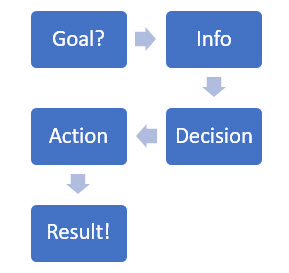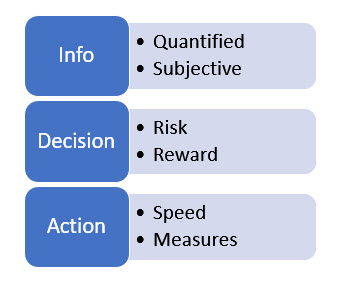It’s a fact of life and of business: Good results come from good actions, good actions come from good decisions, and good decisions come from good information.
Therefore, the most important resource in any business is information. Information gives your power to make better decisions, take better actions, and achieve better results aligned with your goals.
Figure 33.1 Resources and Systems to Support Success

Information
What information do you use in your business to regularly improve your results in:
- Customer satisfaction
- Value to customers
- Ease of developing, manufacturing, delivering
- Employee engagement
- Cash flow velocity
- Product margins
- Strengthening customer relationships
- Developing your leadership team
- Enhancing your business valuation
- Leaving a legacy?
Resources
In business, resources can include your tangible and intangible assets.
Tangible assets are easy to see and touch, such as: cash, customer contracts, equipment, location, signage. These are on your balance sheet.
Intangible assets are actually more powerful but much more difficult to identify and quantify, including: your brand, reputation, intellectual property, employee engagement and enthusiasm, energy, culture, momentum, direction, strategy, and leadership team.
Resources can include priceless relationships with mentors, lessons from the school of hard knocks, and wisdom learned from mistakes.
How are you turning your most valuable resources into assets or methods of operating your business consistently and profitably? How are these valuable pieces of hard-earned wisdom converted into systems?
Systems
When I first started consulting, I learned that one of the most valuable things in a business is a binder called “This Is How We Do It Here.”
Yes, a standard operating procedure for everything, from promotions, to making the product, to how it is sold, to creating the invoice, to collecting the cash, to following up with the customer, to paying your employees.
The most important systems are:
- Creating and delivering value for your customers
- Enhancing your team’s skills and abilities
- Delivering consistent financial performance
- Management systems that maintain all of the above.
Figure 33.2 Information, Decision, Action Systems

What systems do your managers and employees use in your business? And, are they documented, accessible, updated, and used for training and performance management?

